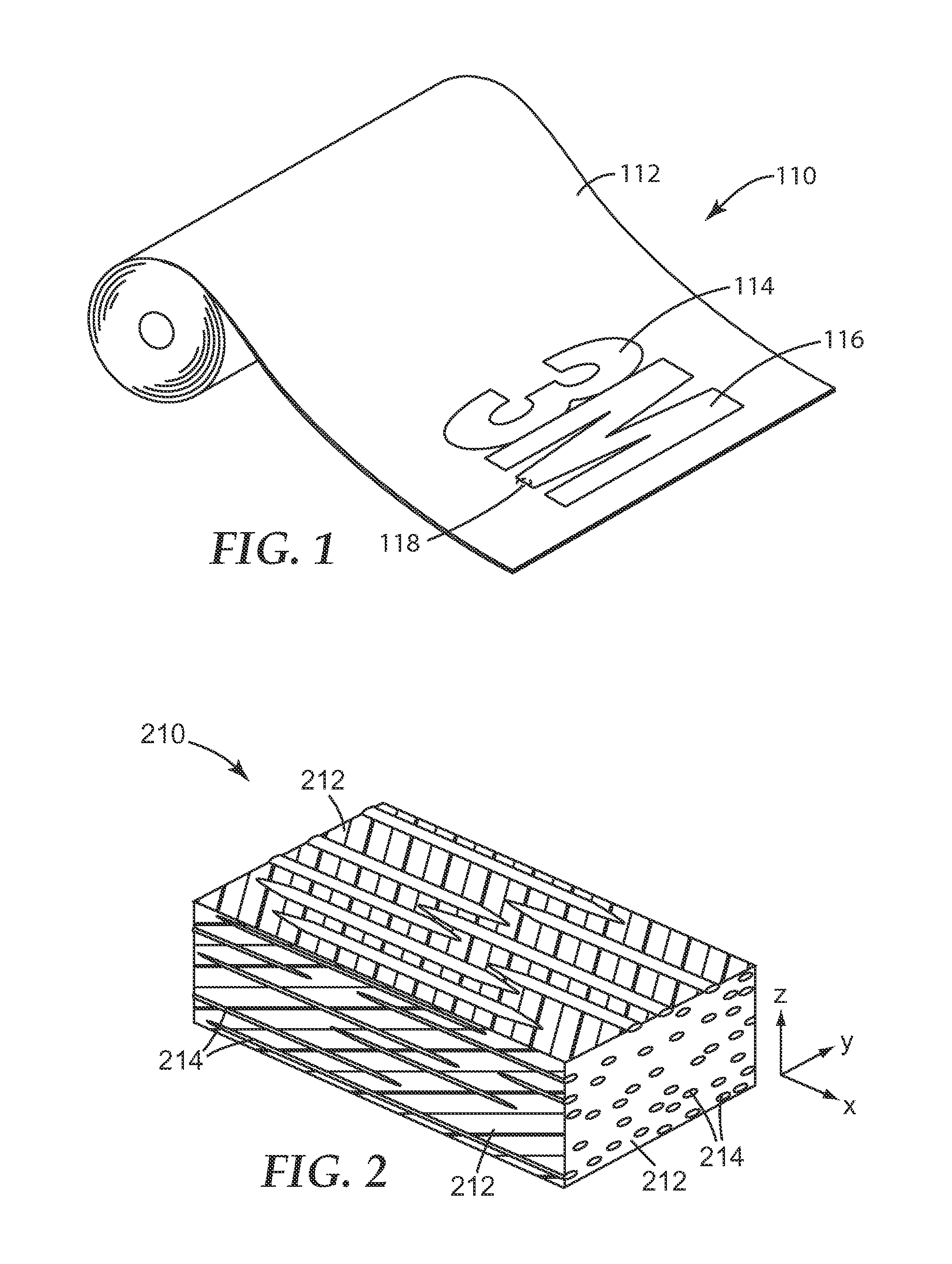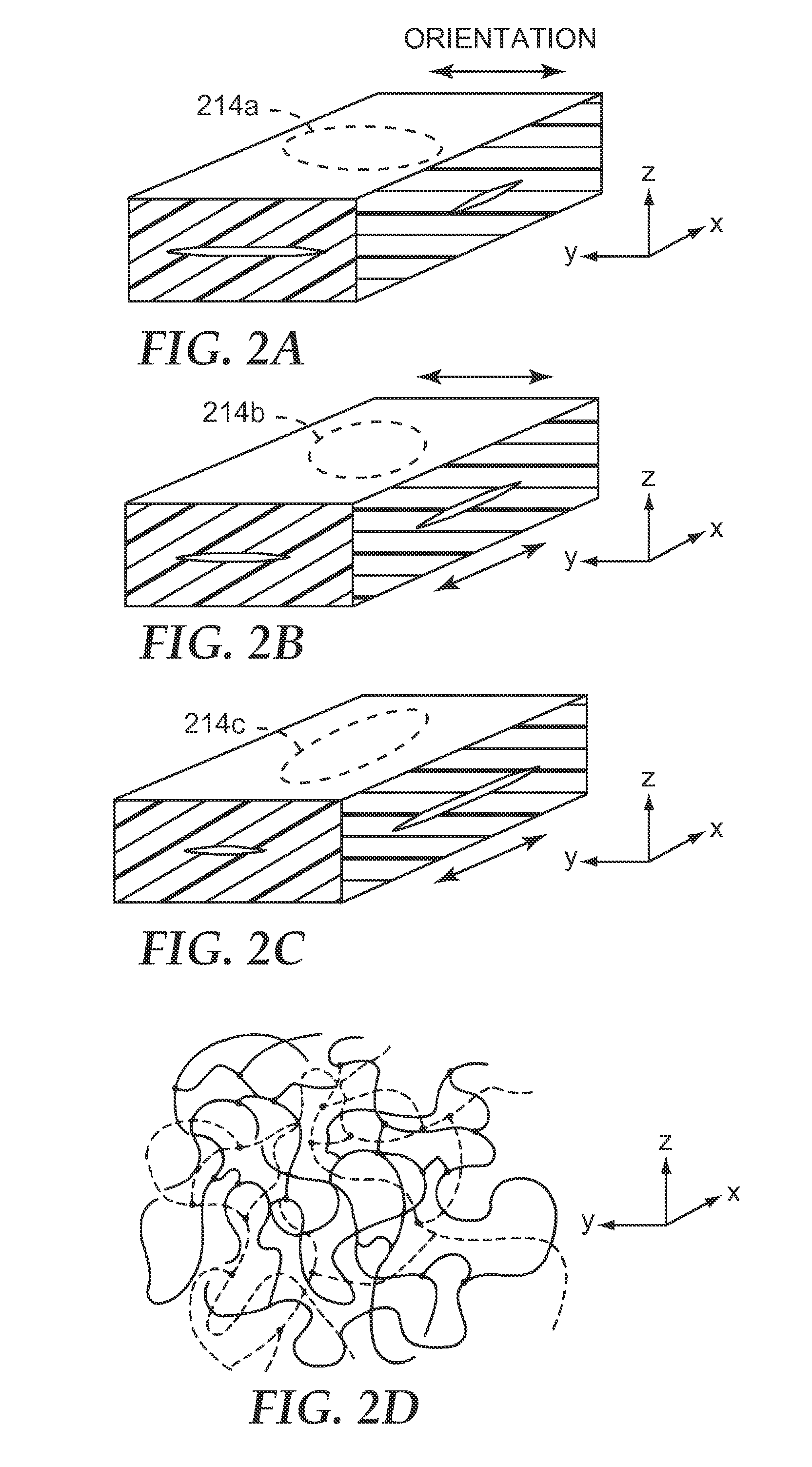Diffuse reflective optical films with spatially selective birefringence reduction
a technology of optical films and selective birefringence, applied in the field of optical films, can solve problems such as significant reflection, and achieve the effects of reducing birefringence, selective birefringence reduction, and reducing or eliminating preexisting optical birefringen
- Summary
- Abstract
- Description
- Claims
- Application Information
AI Technical Summary
Benefits of technology
Problems solved by technology
Method used
Image
Examples
example 1
[0163]A multi-layer optical film was co-extruded comprising an inner core (optical packet) and two outer, diffuse-reflective skin layers. The inner core comprised 151 alternating layers of a higher and lower refractive index polyester. The two outer layers of the optical core were thicker to form two protective boundary layers (PBLs). The PBLs comprised the lower index material. The higher index material was a copolymer of polyethylene naphthalate (PEN), and comprised 90 mol % naphthalene dicarboxylate and 10 mol % terephthalate as carboxylates as described in Example 1 of U.S. Pat. No. 6,352,761 (Hebrink et al.), this copolymer containing both PEN and polyethylene terephthalate (PET) sub-units, and referred to herein as 90 / 10 coPEN. The lower index material was another copolymer of PEN (i.e., another coPEN) as described in Example 10 of U.S. Pat. No. 6,352,761 (Hebrink et al.), this lower index material referred to herein as 55 / 45 HD coPEN. The skin layers of the multilayer optical...
PUM
 Login to View More
Login to View More Abstract
Description
Claims
Application Information
 Login to View More
Login to View More - R&D
- Intellectual Property
- Life Sciences
- Materials
- Tech Scout
- Unparalleled Data Quality
- Higher Quality Content
- 60% Fewer Hallucinations
Browse by: Latest US Patents, China's latest patents, Technical Efficacy Thesaurus, Application Domain, Technology Topic, Popular Technical Reports.
© 2025 PatSnap. All rights reserved.Legal|Privacy policy|Modern Slavery Act Transparency Statement|Sitemap|About US| Contact US: help@patsnap.com



